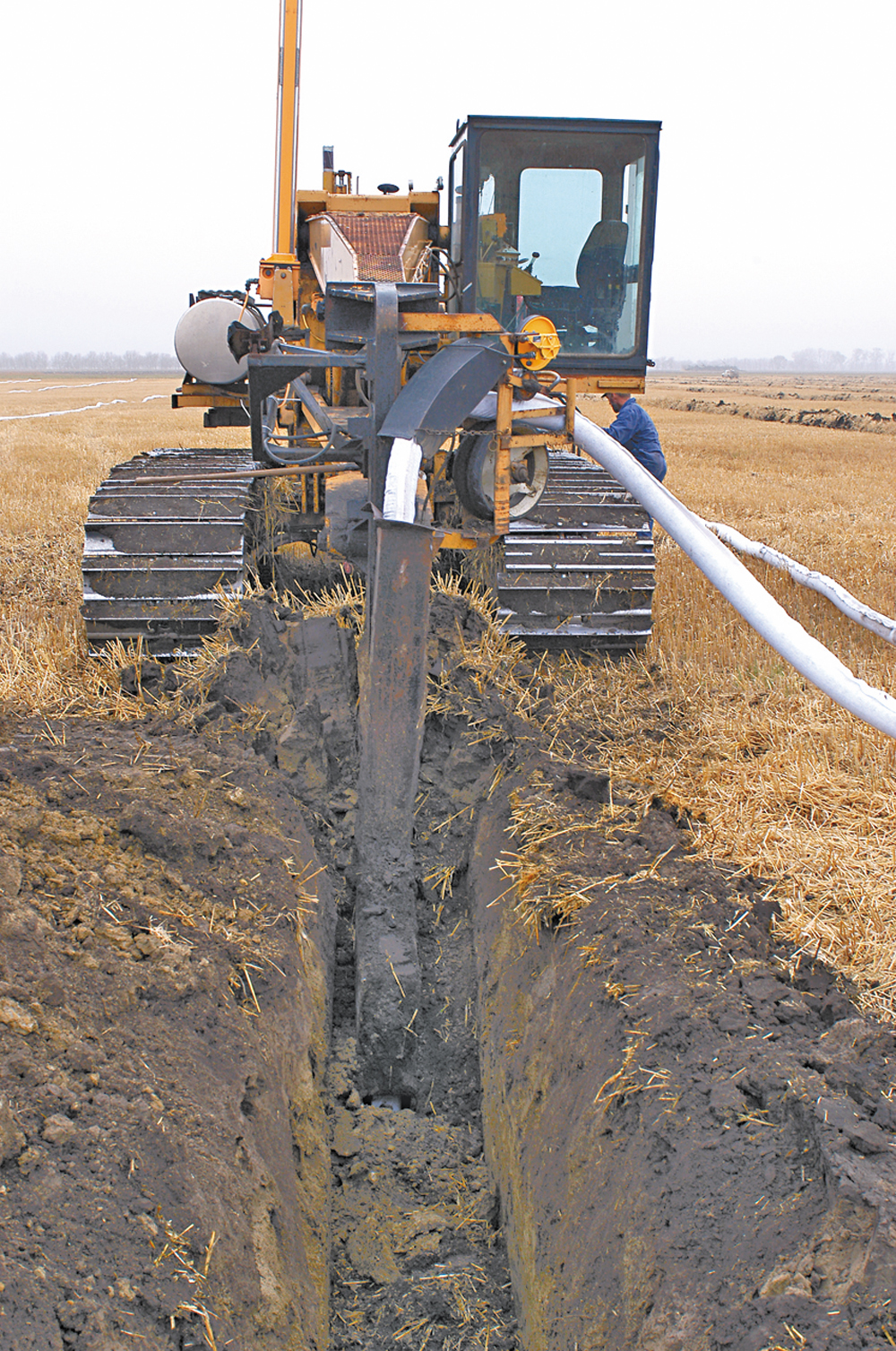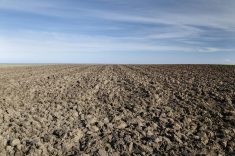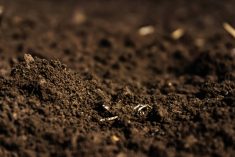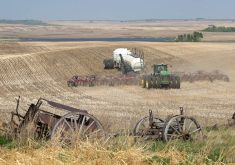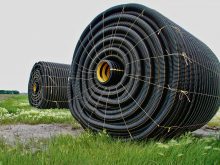Tile-drained fields can remove surplus subsurface moisture improving crop-growing conditions, but there’s also a risk after manure is applied that nutrients and pathogens could leave the field in that water.
The Manitoba Livestock Manure Management Initiative Inc. (MLMMI) wants to find out what scientists already know about mitigating nutrient losses in fields with controlled tile drainage. To that end it’s “inviting qualified individuals, partnerships, companies, and research organizations to submit an application to conduct a literature review in the area of Beneficial Management Practices (BMPs) for the Application of Manure on Tile-Drained Lands.”
Read Also
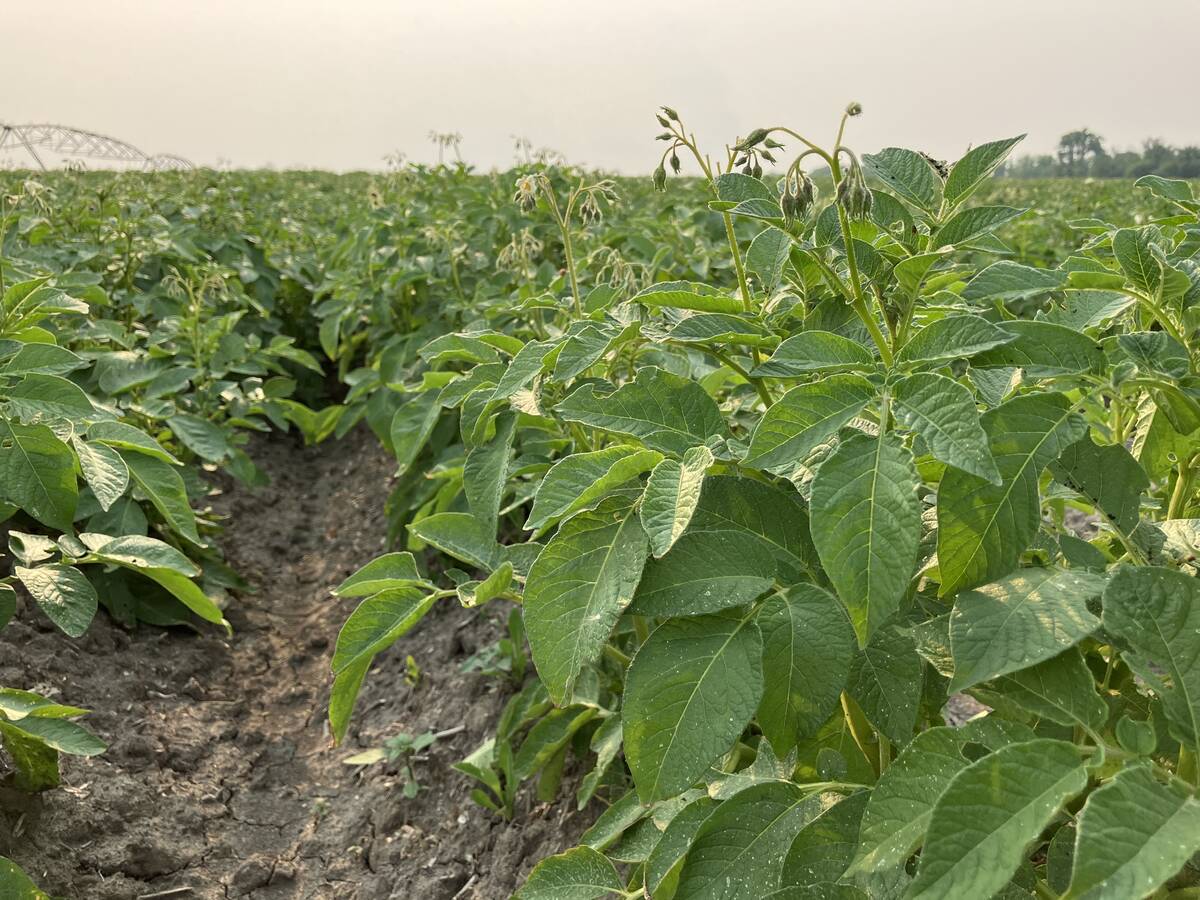
Potatoes join Innovation Farms testing ground
New MacGregor site adds potato farming to FCC and EMILI’s agriculture tech initiatives in Manitoba.
The relationship between tile drainage and nutrient loss has been widely studied, manager of the MLMMI, John Carney, said in an interview Dec. 9, but not necessarily in Manitoba.
“With our climate and soil, our reality here is different than in other jurisdictions,” Carney said. “That’s one of the values of having an organization like ours — we’re Manitoba-centric.
“So we’re keen to learn best practices and hear what’s working in other areas, but we’ve always got to pass it through the Manitoba filter to see if it’s practical or appropriate for our conditions. That’s our starting point.”
The successful applicant will complete the literature review by May 2016. The review may trigger further research in Manitoba, but not automatically, Carney said.
“First of all we want to find out what the established baseline science out there has discovered and what we can learn or use from work that has already been done, and frankly paid for in other areas, because there is no point reinventing the wheel,” he said.
After the MLMMI did a literature review on manure processing technology, it followed up by evaluating the technology under Manitoba conditions, Carney said.
“I believe it’s important that science informs our direction and the policies that we come up with and the procedures we put in place and that’s why work like this is valuable,” he said. “Science has a major role to play in these questions and that’s why organizations like ours exist — to go there and learn and bring that science together.”
Under conventional tile drainage, water flows unencumbered, but by adding a control structure the farmer can adjust or even stop water from leaving the field.
Managing controlled tile drainage can cut the annual average nitrogen load coming from fields in Ohio in half, according to research done by Ohio State University. While controlling the water that comes from a tile-drained field doesn’t reduce the concentration of nitrogen in the water, it can significantly reduce the nutrient load, Ohio State extension agricultural engineer Larry Brown said in a webinar April 17. Holding water back during dry times in the growing season can also boost yields, Brown said.
MLMMI says applications to do the literature review should address the following questions and objectives, with specific reference to how these findings are relevant to Manitoba conditions:
- Detail the factors to consider when determining if subsurface drainage is beneficial.
- Review and summarize research on nutrient and pathogen transport from tile-drained lands to waters. Comparing nutrient and pathogen transport from non-tiled land and tiled land amended with manures would be particularly valued.
- Describe the structures, methods and approaches currently used in controlled drainage systems and their suitability under Manitoba conditions.
- Summarize operating best management practices (BMPs) that decrease the risk of nutrient and pathogen transport to water that can occur with subsurface drainage systems.
- Summarize system maintenance BMPs that decrease the risk of nutrient and pathogen transport to water that can occur with subsurface drainage systems.
- Outline any research gaps and recommendations future research and development needs/priorities in the use of tile drainage in Manitoba.
- Approved applicants must assist MLMMI communicate project findings to the industry and public and describe how in their application.
- Preferred applicants will have significant knowledge and experience in nutrient planning and manure application in Manitoba and have a soil science or an engineering background.
Although the deadline to apply is 10 a.m. CST Jan. 5, 2016, interested applicants should contact MLMMI executive director John Carney before Dec. 23, 2015 at (204) 945-2122, or [email protected] if they have questions.






